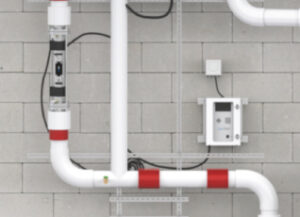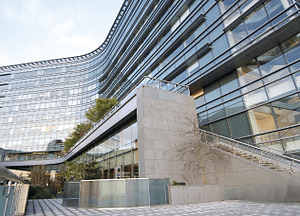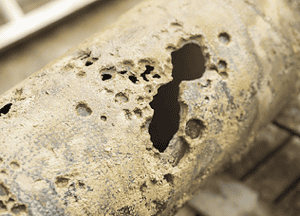The Centers for Disease Control and Prevention (CDC) has reported between 8,000 and 18,000 cases of Legionnaires’ disease annually in the United States caused by the spread of the Legionella bacteria. How can you protect your facility from Legionella and other waterborne pathogens? Here are five practices that you can implement to prevent bacterial outbreaks in your building’s water system and protect your patients, guests, and facility.
1. Evaluate sustainability
Choose a systemic, long-term solution for your facility that is environmentally friendly, cost-effective, easy to maintain, and focuses on preventing the growth and spread of Legionella and other waterborne pathogens. Prioritize methods that provide residual protection while requiring little personnel maintenance and monitoring and avoid scale, corrosion, and biofilm growth.
2. Consider your environment
Consider a plan that has no detrimental effects on the immediate plumbing environment and the individuals it serves, such as the patient, guests, and employees. You will need to evaluate where waterborne pathogens thrive. Most have a presence and are amplified in non-circulating loops, stored water systems, and water biofilms, and they tend to increase in hot-water environments. Pathogens are transmitted through aerosolization, ingestion, and contact. Knowing these facts, identify areas or devices in your building where Legionella or other waterborne pathogens might grow to prevent and eliminate colonization.
3. Avoid hazards
Many water disinfection methods create other hazardous conditions in the long term. Avoid practices that require hazardous handling, storage, or continuous monitoring. Protect yourself from carcinogens and other harmful health effects caused by conventional disinfection methods. Choose a non-corrosive solution that does not damage the distribution system and is effective throughout the entire water system.
4. Select vetted technologies
Select a Legionella prevention method with a proven track record, EPA registered, NSF approved, and ETL/UL certified. LiquiTech’s copper-silver ionization technology is certified by the agencies. Our filters have been extensively evaluated by relevant microbiological test protocols in independent laboratories and have passed all rigorous third-party tests to ensure complete compliance.
5. Develop a water management program
Developing and maintaining an effective water management program is a process that requires review and proactivity. Follow these six steps to creating an effective water management plan:
- Assemble a water management team of employees, partners, and outside experts.
- Create a water system map of where potentially hazardous conditions could occur in your building’s water system. This helps you establish critical control point measures.
- Develop procedures and tests that monitor pH levels, biocide concentrations, and temperature to verify that the various elements of the plan are practical.
- Ensure regular monitoring is easily maintained to prevent potentially hazardous conditions efficiently.
- Establish adequate monitoring of your prevention system and take corrective action when a particular CPP is not under control by developing proper intervention methods. In such cases, pre-planned and written procedures should be outlined for immediate corrective action.
- Documenting all the activities throughout this process is imperative so you can effectively evaluate the results.


